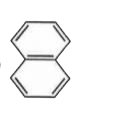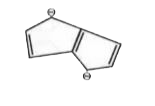Which of the following is a polar molecule
SF4
SiF4
XeF4
BF3
The correct Answer is:A
To determine which of the given molecules is a polar molecule, we need to analyze each option based on its molecular geometry and dipole moment. A polar molecule has a net dipole moment that is not equal to zero, while a non-polar molecule has a net dipole moment equal to zero.
1. Understanding Polar and Non-Polar Molecules:
- A polar molecule has a net dipole moment (μ) that is not equal to zero. This occurs when there is an uneven distribution of electron density due to differences in electronegativity between atoms.
- A non-polar molecule has a net dipole moment equal to zero, often due to symmetrical geometry that allows dipole moments to cancel each other out.
2. Analyzing SF4:
- Hybridization: SF4 has sp3d hybridization.
- Geometry: The molecular shape is see-saw.
- Dipole Moment: The four fluorine atoms create dipole moments directed towards them. Since the geometry is not symmetrical, the dipole moments do not cancel out completely.
- Conclusion: SF4 is a polar molecule.
3. Analyzing SiF4:
- Hybridization: SiF4 has sp3 hybridization.
- Geometry: The molecular shape is tetrahedral.
- Dipole Moment: In a tetrahedral geometry, the dipole moments from the four fluorine atoms cancel each other out due to symmetry.
- Conclusion: SiF4 is a non-polar molecule.
4. Analyzing XeF4:
- Hybridization: XeF4 has sp3d2 hybridization.
- Geometry: The molecular shape is square planar.
- Dipole Moment: The dipole moments from the four fluorine atoms cancel each other out due to the symmetrical square planar shape.
- Conclusion: XeF4 is a non-polar molecule.
5. Analyzing BF3:
- Hybridization: BF3 has sp2 hybridization.
- Geometry: The molecular shape is trigonal planar.
- Dipole Moment: The three fluorine atoms create dipole moments that cancel each other out due to the symmetrical geometry.
- Conclusion: BF3 is a non-polar molecule.
Final Conclusion:
The only molecule among the options that is a polar molecule is SF4.
---
- A polar molecule has a net dipole moment (μ) that is not equal to zero. This occurs when there is an uneven distribution of electron density due to differences in electronegativity between atoms.
- A non-polar molecule has a net dipole moment equal to zero, often due to symmetrical geometry that allows dipole moments to cancel each other out.
- Hybridization: SF4 has sp3d hybridization.
- Geometry: The molecular shape is see-saw.
- Dipole Moment: The four fluorine atoms create dipole moments directed towards them. Since the geometry is not symmetrical, the dipole moments do not cancel out completely.
- Conclusion: SF4 is a polar molecule.
- Hybridization: SiF4 has sp3 hybridization.
- Geometry: The molecular shape is tetrahedral.
- Dipole Moment: In a tetrahedral geometry, the dipole moments from the four fluorine atoms cancel each other out due to symmetry.
- Conclusion: SiF4 is a non-polar molecule.
- Hybridization: XeF4 has sp3d2 hybridization.
- Geometry: The molecular shape is square planar.
- Dipole Moment: The dipole moments from the four fluorine atoms cancel each other out due to the symmetrical square planar shape.
- Conclusion: XeF4 is a non-polar molecule.
- Hybridization: BF3 has sp2 hybridization.
- Geometry: The molecular shape is trigonal planar.
- Dipole Moment: The three fluorine atoms create dipole moments that cancel each other out due to the symmetrical geometry.
- Conclusion: BF3 is a non-polar molecule.
The only molecule among the options that is a polar molecule is SF4.
Similar Questions
Knowledge Check
Which of the following is a polyamide molecule?
ATeryleneBRayonCNylon-6DPolystyreneWhich of the following is most polar?
A B
B C
C D
D
Which of the following is non polar species.
ASO2BCO2CH2ODNH3
Which of the following is non-polar molecular solid?
View SolutionWhich of the following are chiral molecules

View SolutionWhich of the following species has polar and non-polar bonds but molecule as a whole is non-plonar?
View SolutionWhich of the following species has polar and non-polar bonds but molecule as a whole is non-plonar?
View SolutionWhich of the following is not a linear molecule?
View Solution
